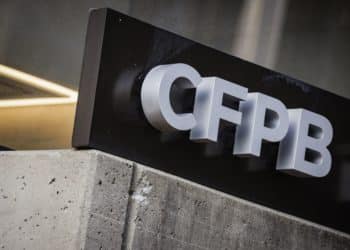Compliance Insider: Houston, We Have a Problem

At its core, the MLA requires creditors to determine whether borrowers are “covered borrowers” (generally a service member and his or her spouse and dependents), and calculate and disclose a “Military Annual Percentage Rate” (MAPR) that cannot exceed 36%. The main difference between a garden-variety APR and an MAPR is that the latter includes charges for items such as credit insurance, debt cancellation, and other “credit-related ancillary products.” So, the MAPR calculation would include the cost of a GAP product, credit insurance, etc. MLA violations carry both civil and criminal penalties that apply to dealers and assignees alike.
Using the latitude and discretion Congress provided it, the DoD chose to exclude from the Rule’s coverage purchase money: a) vehicle finance transactions, and b) personal property finance transactions, to the extent they were secured by the vehicle or personal property being purchased. This was important because dealers have no way to calculate an MAPR accurately, and to my knowledge none of the DMS providers has undertaken to create a means to do so. While the revised rule continues the exclusions for these kinds of credit, the DoD made some seemingly subtle
changes to the Rule’s language that were, presumably, intended to clarify the extent of the exclusion.
The new language provides that “consumer credit” does not exclude:
“Any credit transaction that is expressly intended to finance the purchase of [a motor vehicle] [personal property] when the credit is secured by the [vehicle property] being purchased.”
The phrase, “expressly intended,” is a new addition to the rule. It caused a fair amount of chatter when the revisions were finalized as it was not entirely clear what it was intended to accomplish. However, the industry generally concluded that this new language was more about style than substance. After all, the vast majority of purchase money vehicle finance transactions are originated by dealers, and they rarely, if ever, engage in financing transactions that are not secured by a vehicle being purchased — certainly not if they want banks and finance companies to buy said financing contracts — so virtually every vehicle finance transaction is by nature “expressly intended” to finance the purchase of a motor vehicle.
Any comfort the industry had with its interpretation was called into question when the DoD published its guidance on Aug. 26, 2016, that included the question:
“Does credit that a creditor extends for the purpose of purchasing personal property, which secures the credit, fall within the exception to “consumer credit” . . . where the creditor simultaneously extends credit in an amount greater than the purchase price?”
To which the DoD responded:
“No. [The rule] provides a list of exceptions . . . including an exception for any credit transaction that is expressly intended to finance the purchase of personal property when the credit is secured by the property being purchased. A hybrid purchase money and cash advance loan is not expressly intended to finance the purchase of personal property, because the loan provides additional financing that is unrelated to the purchase. To qualify for the purchase money exception from the definition of consumer credit, a loan must finance only the acquisition of personal property. Any credit transaction that provides purchase money secured financing of personal property along with additional “cash-out” financing is not eligible for the exception.”

Most troubling is the statement that, “to qualify for the purchase money exception from the definition of consumer credit, a loan must finance only the acquisition of personal property.” Virtually no vehicle finance transaction is limited to financing the vehicle. It also finances, taxes, title and registration fees, other government-mandated fees (e,g, the smog fee in California), dealer-generated administrative fees, etc. Does this mean dealers have to determine whether every customer is a “covered borrower” subject to MLA protection? I certainly hope not, because I’m not at all confident any dealer is equipped to make that determination or calculate and disclose an MAPR.
Assuming we can get comfortable that government fees, taxes and the like won’t effectively blow up the exclusion, would the fact that a dealer financed a service contract in a given transaction do just that? Vehicle finance has evolved to a point where very little down payment is required to get someone in a car, and finance sources routinely offer advances to dealers in excess of 100% LTV to give dealers the flexibility to sell valuable ancillary products like service contracts and credit insurance. Is the rule intended to constrict a dealer’s ability to sell these products? Or would they be eligible for treatment as “personal property” subject to their own exclusion?
And let’s not forget negative equity, a fairly common component of vehicle finance today. Would that be the “hybrid” transaction to which the guidance refers? Will dealers find themselves in a position where they are denying credit to service members and their families because they don’t have the lump sum of cash necessary to pay off their existing auto credit? I doubt that’s what anyone intended.
I’m not sure of the answers to these questions, but I can’t resist the opportunity to parse the government’s language to my ends. Those of you who have read this column for the past eight or so years know that I periodically go on a rant about the difference between a credit sale (i.e., the way most vehicle finance occurs) and loan (i.e., cold hard cash). “Loan” is not a defined term in either the MLA or the rule and has no special meaning. Both define “consumer credit,” and the rule does so in a manner broad enough to include both credit sales and loans. Yet, “loan” is the word the DoD chose to use in its guidance — not the defined term, “consumer credit.”
Could it be that the guidance doesn’t apply to ordinary vehicle finance, but just to “loans” in the true sense of the word?
I can make that argument with a perfectly straight face, but I am not confident the DoD and all the other agencies with enforcement authority (e.g., the banking agencies, the Federal Trade Commission, CFPB, etc.) would agree. (This is just another way my job and those of my peers has become harder — our ability to rely on language and the plain and true meaning of words to support our positions continues to deteriorate in the governmental arena). As a result, prudence requires us lawyer types to refrain from giving much comfort to our clients.
The civil and criminal penalties for violating the MLA are severe, particularly if we interpret the revised Rule in a manner the government won’t accept. But treating credit sales that finance taxes, fees, ancillary products and/or negative equity as outside the purchase money exclusion essentially eviscerates that exclusion, and I certainly hope that is not what the DoD intended. If it is, it shouldn’t be.
Industry needs a quick fix from Congress or DoD. Unfortunately, relief is unlikely to be forthcoming. Congress is mired in budget bills and all the nonsense that goes on in an election year, and the leanly-staffed office at the DoD tasked with managing the Rule is apparently responsible for a myriad of other unrelated areas of military administration.
“Houston, we have a problem!”
When Apollo 8 made that call, Houston worked around the clock to find a solution to a very time-sensitive problem and avoid a national tragedy. As we all know, it was a successful effort and an exemplar of government working the way it should. Is industry’s “Houston” listening? I guess we’ll see.
Michael Benoit is a partner in the Washington, D.C., office of Hudson Cook LLP. He is a frequent speaker and writer on a variety of consumer credit topics. Michael can be reached at 202-327-9705 or mbenoit@hudco.com. Nothing in this article is legal advice and should not be taken as such. Please address all legal questions to your counsel.









